The piano, a quintessential instrument in the world of music, holds a unique charm and significance. With its rich tonal dimensions and versatility, it stands out as a singular musical tool respected by professional musicians, teachers, and novices alike. This article will explore why the piano is widely regarded as the best instrument, highlighting its advantages in terms of ease of learning, musical understanding, and the beauty of its sound.
Ease of Playing Piano as a First Instrument
The piano’s layout, with its keys aligned linearly, makes it particularly approachable for beginners. Unlike other instruments, such as the guitar or violin, where you must learn to hold the instrument in a certain way or create the right finger positions, the piano requires only that you press the correct keys. This straightforward design allows budding musicians to produce pleasant sounds and simple melodies right from the onset, encouraging continued practice and learning. Moreover, the piano’s visual layout aids in understanding musical concepts, such as scales and chords, making it an excellent tool for building a strong foundational knowledge of music theory. Thus, the ease of playing makes the piano an ideal first instrument for those embarking on their musical journey.
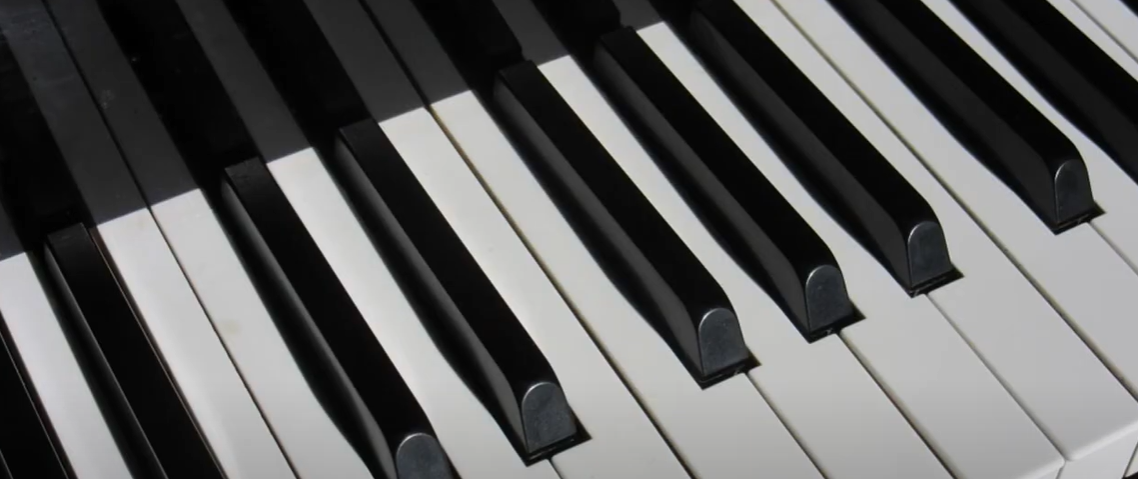
Learning to Read Music
When it comes to the realm of learning to read music, the piano once again asserts its unrivaled superiority. Each piano key corresponds to a specific musical note, providing a clear, visual representation of the music sheet. For beginners learning to read music, the direct relationship between the keyboard and the notated music is invaluable. It makes the process less abstract and more tangible. Furthermore, the piano’s broad range allows for the exploration of a wide spectrum of notes, from lows to highs, all easily accessible on the keyboard. Playing these notes strengthens the understanding of treble and bass clefs, crucial for reading music. As a result, acquiring the skill of reading sheet music on a piano often proves to be more instinctive and uncomplicated compared to many other musical instruments. [1]
Sense of Pitch
The piano plays a pivotal role in developing a robust sense of pitch. On the piano, each key corresponds unequivocally to a distinct pitch, creating an intuitive understanding of the relationship between different notes and their respective sounds. This makes it easier to identify and replicate pitch, an essential skill in music. The piano’s wide range, covering low to high pitches, allows for a comprehensive exposure to the full musical spectrum. Moreover, the fixed tuning of a piano offers a reliable point of reference for discerning and understanding pitch. This is particularly beneficial for those just starting their musical journey, as it negates the need for continuous tuning adjustments that some other instruments require. Hence, the piano fosters a keen sense of pitch, which is fundamental to musical training and appreciation.
Tuning and Maintenance
In comparison to other instruments, the piano demands relatively less frequent tuning and maintenance, reinforcing its position as a top choice for beginners and seasoned musicians alike. While it’s true that a piano does require periodic tuning, these adjustments are typically needed only once or twice a year, depending on the instrument’s age, usage, and environmental conditions. This is in stark contrast to instruments like the guitar or violin, which may require tuning before each use. In terms of maintenance, a piano’s longevity can be enhanced with simple actions such as regular cleaning and avoiding extreme temperatures or humidity, which can cause damage. Therefore, the practicality of piano tuning and maintenance further underscores the instrument’s appeal, making it an ideal choice for those seeking an uncomplicated, yet rewarding musical journey. [2]
Sounds Good from the Start
One of the most encouraging aspects of learning to play the piano is that it produces pleasing sounds right from the start. Unlike wind or string instruments, which can emit screechy or discordant notes when played by novices, the piano’s design ensures that each key pressed produces a clear, defined pitch. This immediate ability to create harmonious sounds can be incredibly motivating for beginners, providing instant auditory feedback that their efforts are leading to beautiful music. Simultaneously, this characteristic of the piano fosters an early appreciation for musical aesthetics, encouraging learners to delve deeper into the realm of melodies and harmonies. It’s no exaggeration to state that the piano’s ability to “sound good from the start” is a key factor in its popularity and acclaim as the best instrument.
Wide Range of Pitch
The piano has an expansive pitch range that surpasses most other instruments. A standard piano has 88 keys, with 52 white and 36 black keys, spanning over seven octaves and a minor third. This extensive range offers the chance to effortlessly perform both soaring melodic lines and deep bass lines, often simultaneously. Such a comprehensive pitch range allows for the exploration of a diverse array of music genres and styles, from classical sonatas to modern pop hits. Furthermore, having the breadth of pitch at one’s fingertips can also enhance a musician’s understanding of harmonies and how different pitches work together to create a particular sound or emotion. Therefore, the piano’s wide range of pitch not only contributes to its versatility but also broadens its learners’ musical understanding and creativity. [3]

Melody and Accompaniment
One of the unique features of the piano is its capacity for both melody and accompaniment, a trait that sets it apart from many other instruments. The piano’s design allows musicians to play the melody with one hand while accompanying with chords or rhythmic patterns with the other. This capability enables a pianist to perform complete musical pieces without the need for any other instrumental accompaniment, offering a full and rich musical experience. Additionally, this feature enhances a musician’s understanding of how different parts of music work together, offering a broader perspective on composition and arrangement. This dual capability of playing melody and accompaniment simultaneously underscores the piano’s remarkable versatility, further reinforcing its status as the best instrument for both learning and performing music.
Dynamic Range
The piano boasts an impressive dynamic range, allowing musicians to play from the softest whispers of sound to booming, room-filling fortissimos. This unique attribute is facilitated by the piano’s sensitive key mechanism, which responds to the touch of the player, permitting control over the volume of each note. A light touch will produce a soft sound, while a heavier touch results in a louder one. This gives pianists the ability to express a wide range of emotions and moods within a piece of music, adding depth and richness to their performance. The broad dynamic range of the piano is a testament to its expressive power and is yet another reason why it is often considered the best instrument. [4]
A Great Foundation
The piano serves as an exceptional foundation for understanding the basics of music theory, making it an ideal starting point for any musical journey. When you learn piano, you’re not just learning an instrument – you’re gaining an understanding of music as a whole. The piano’s layout, with its black and white keys, provides a visual representation of whole and half steps, helping to illustrate key concepts such as scales, chords, and intervals. This makes the understanding of music theory more accessible and intuitive, which can be beneficial as learners progress to more advanced study or even transition to other instruments. Therefore, learning the piano can provide a great foundation for a lifetime of musical exploration and enjoyment.
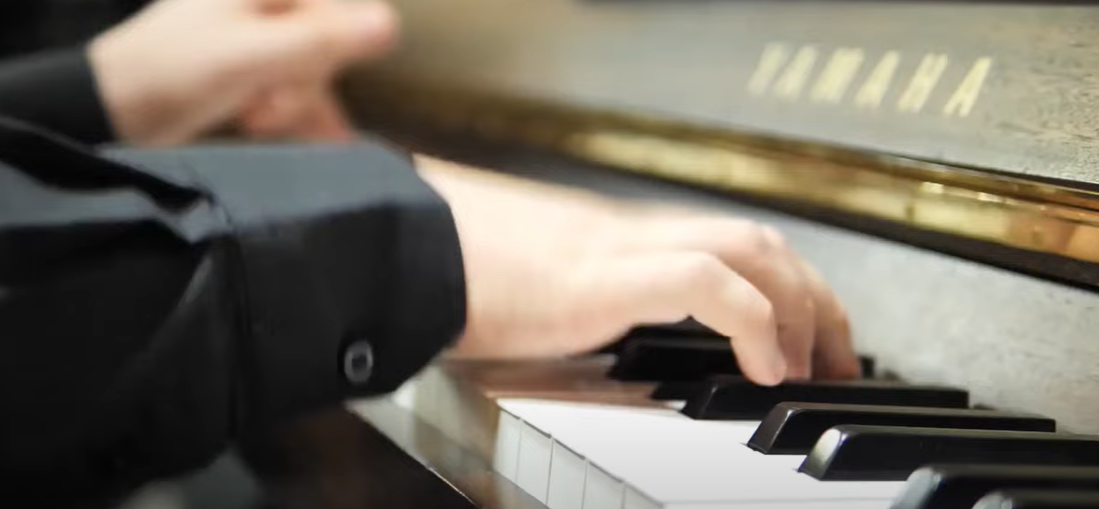
What About Expressions?
The piano excels in its capacity for musical expression, offering musicians a wide array of tonal possibilities. A pianist can shape the sound and mood of a piece by varying the speed, pressure, and timing of their keystrokes, granting them great creative freedom. This ability to convey different emotions through the instrument, be it the passionate intensity of a stormy nocturne or the tranquil serenity of a lullaby, is one of the most rewarding aspects of piano playing. From the subtle use of the sustain pedal for a richer sound to the dynamic contrast between piano (soft) and forte (loud), these expressive nuances make the piano uniquely versatile and emotive. The rich expressive capabilities of the piano make it not just an instrument, but a powerful medium for artistic expression. [5]
FAQ
Is The piano the best instrument ever?
Yes, many would argue that the piano is indeed the best instrument ever. Its extensive pitch range, ability to play both melody and accompaniment, dynamic range, and expressive capabilities set it apart from other instruments. Moreover, the piano serves as a great foundation for understanding music theory, making it an incredibly versatile and comprehensive instrument. Its design ensures that even beginners can produce pleasing sounds from the start, encouraging continued learning. While the “best” instrument can be subjective and dependent on personal preferences, the piano’s attributes make it a strong contender for the title.
Why is piano the king of instruments?
The piano is often referred to as the “king of instruments” due to its majestic and multifaceted abilities. It surpasses many other instruments in terms of both range and versatility. With its broad pitch range of seven octaves plus a minor third, a piano can mimic the bass of the lowest instruments and reach the treble of the highest. Additionally, the piano’s ability to play melody and accompaniment simultaneously gives it an orchestral quality, enabling a single pianist to deliver a complete musical experience. In terms of expressiveness, the piano’s vast dynamic range and sensitive key mechanism allow for a wide scope of musical emotion, from the most delicate whispers to robust fortissimos. Its clear, visual layout helps simplify complex concepts in music theory, making it an ideal foundational instrument for beginners and a continuous challenge for seasoned musicians. The piano’s ability to cater to all these musical facets, along with its grand physical presence, rightfully earns it the title “king of instruments”.
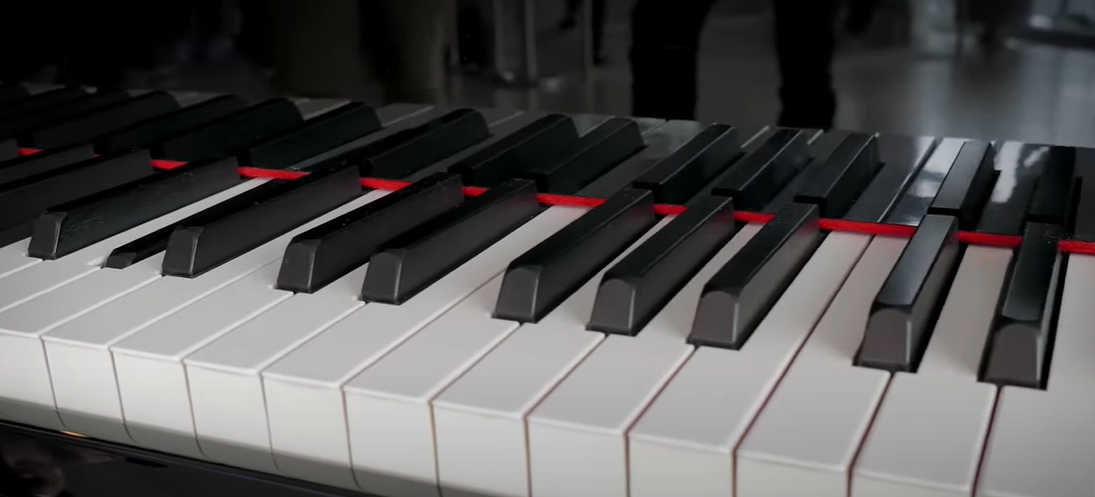
Why do people love piano?
People love the piano for a multitude of reasons. The piano’s comprehensive musical range and tonal diversity make it incredibly satisfying to play, offering an infinite palette of musical possibilities. Its capacity for both melodic and harmonic expression enables pianists to convey a broad spectrum of emotions, making piano-playing a highly rewarding and cathartic experience. Additionally, the piano’s visual layout aids in understanding complex musical concepts, making it a highly effective tool for learning music theory. This, in conjunction with the physical and cognitive benefits of piano practice, contributes to the enduring popularity of the piano. Furthermore, the process of mastering the piano can instill a sense of accomplishment and boost self-confidence, enhancing one’s appreciation for the instrument. Lastly, the piano’s rich history and its central role in diverse musical genres – from classical to jazz to pop – imbue it with a cultural significance that many find captivating.
What is interesting about the piano?
The piano is a marvel of acoustics, engineering, and craftsmanship. Each piano consists of over 12,000 individual parts, each of which plays an integral role in producing its resonant sound. The sheer complexity and precision involved in crafting a piano make it a fascinating instrument. Historically, the piano’s invention by Bartolomeo Cristofori in the early 18th century represented a significant leap forward in music technology, as it was the first keyboard instrument capable of dynamic variation. Its versatility and ability to adapt to evolving musical trends have ensured its enduring relevance in modern music, from classical symphonies to jazz improvisations and pop ballads. As a testament to its cultural impact, the piano has inspired countless works of literature, art, and cinema. Furthermore, the piano is unique in that it is both a solo instrument and an ensemble instrument. Its wide range allows it to accompany other instruments or voices, yet it can also stand alone as a solo performer.
Is piano a girly instrument?
No, the piano is not a “girly” instrument. The idea that certain instruments are gender-specific is a stereotype that has been gradually dismantled over time. The piano is a universally appreciated instrument played by individuals of all genders, ages, and cultural backgrounds. Historically, renowned male pianists like Franz Liszt, Wolfgang Amadeus Mozart, and Ludwig van Beethoven have made significant contributions to piano music. Simultaneously, female pianists like Clara Schumann, Martha Argerich, and Yuja Wang have left their indelible marks on the world of piano. Therefore, the piano is an instrument for everyone, embracing diversity and promoting equality in music.
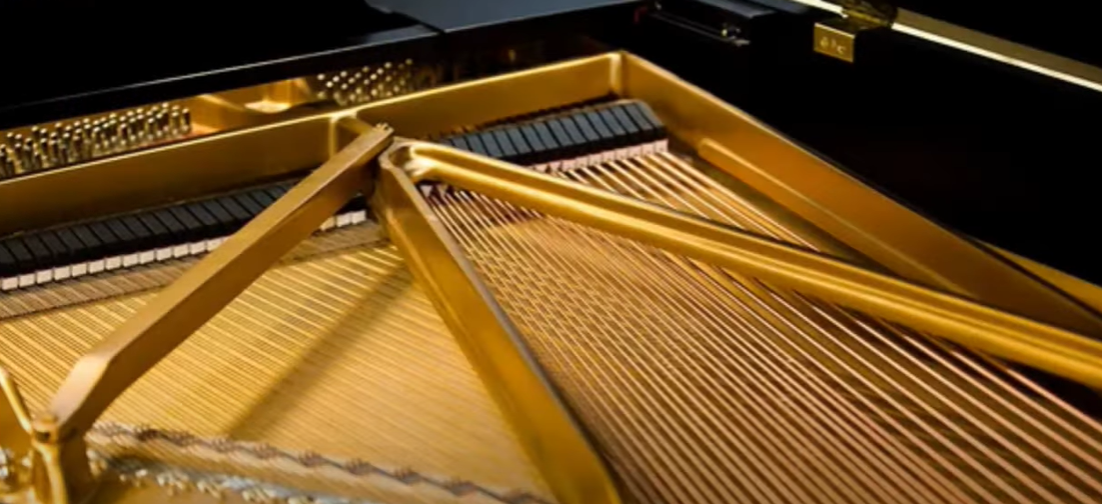
Why is piano better than guitar?
The piano often takes precedence over the guitar for several reasons. Primarily, the piano’s wide range, spanning over seven octaves, significantly outmatches the guitar’s typical range of four octaves, providing a broader spectrum for musical expression. Additionally, pianos have 88 keys enabling you to play multiple notes simultaneously, something that is limited on a six-string guitar. Besides, the piano layout is visually straightforward, making it easier to grasp musical theory concepts such as scales, chords, and intervals. Unlike the guitar where one note can be played in several locations, each note on the piano has one specific location, making sight-reading and understanding music theory simpler. Lastly, the piano’s dynamic range, from subtle pianissimo (quiet) to powerful fortissimo (loud), outshines that of the guitar.
What is the number 1 hardest instrument?
The difficulty of mastering an instrument can be subjective and dependent on various factors such as the individual’s musical aptitude, commitment, and the quality of instruction they receive. However, many musicians and music educators often cite the violin as one of the most challenging instruments to play. The violin’s small size, combined with the need for precise finger placement and bowing technique, necessitates a high level of skill and finesse. Moreover, the absence of frets means that even slight inaccuracies in finger placement can result in out-of-tune notes. Additionally, producing a pleasing tone on the violin requires a delicate balance between bow speed, pressure, and position, adding another layer of complexity.
Why is playing the piano easy?
Playing the piano is often perceived as easier than many other instruments for several reasons. Firstly, the piano’s layout is highly intuitive, with keys arranged in a linear and visually simple manner. This makes it easier to understand musical concepts like scales and chords. Secondly, unlike instruments such as the violin or flute, the piano does not require any special techniques to produce a sound. Simply pressing a key produces a clear and distinct note, making it easier for beginners to start making music right away. Furthermore, piano keys are large enough to accommodate fingers of all sizes, making it more accessible to younger players and those with smaller hands. Lastly, a plethora of learning resources, from traditional piano lessons to online tutorials and apps, makes learning the piano more straightforward and convenient.
Is piano an important instrument?
Without a doubt, the piano is an important instrument in the world of music. Its significance can be attributed to its versatility and its fundamental role in music education. The piano’s broad range and ability to play harmony and melody simultaneously make it a versatile instrument for a variety of musical genres, from classical to jazz and pop. Moreover, the piano is often the instrument of choice for teaching music theory due to its straightforward layout, which visually represents musical structures such as scales, chords, and intervals. Furthermore, many composers use the piano to compose and arrange their pieces due to its ability to simulate a whole orchestra.
What is the best age to learn piano?
The best age to start learning piano can vary greatly based on individual factors such as maturity, interest, and motor skills development. However, a common recommendation is that children can typically start piano lessons around the age of 6. At this age, they usually possess the necessary motor skills to play the piano and have the patience to focus during lessons. Nevertheless, it’s never too late to start learning piano. Many adults also embark on learning the piano as a new hobby or fulfilling a lifelong dream. The key is consistent practice, passion, and the right guidance, making any age potentially the ‘best’ age to start learning the piano.
Useful Video: Top 7 Reasons Piano is the Best Instrument
Conclusion
In conclusion, the piano stands out as a versatile, inclusive, and educational instrument. It transcends gender, age, and cultural boundaries, allowing a vast range of expression due to its extensive range and dynamic capabilities. While the choice of instrument often comes down to personal preference, the piano’s intuitive layout and unique attributes often lend it an edge over others. From its role as a fundamental tool in music education to its significance in musical composition across genres, the piano’s importance is indisputable.
References:
- https://www.englandpiano.com/piano-best-instrument-music-lovers/
- https://professionalcomposers.com/why-piano-is-the-best-instrument/
- https://danhon.substack.com/p/7-reasons-why-piano-is-the-best-instrument
- https://www.hoffmanacademy.com/blog/piano-a-great-place-to-begin/
- https://frankhorvat.com/music/6-reasons-piano-best-instrument/




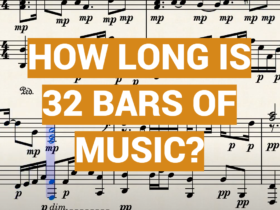
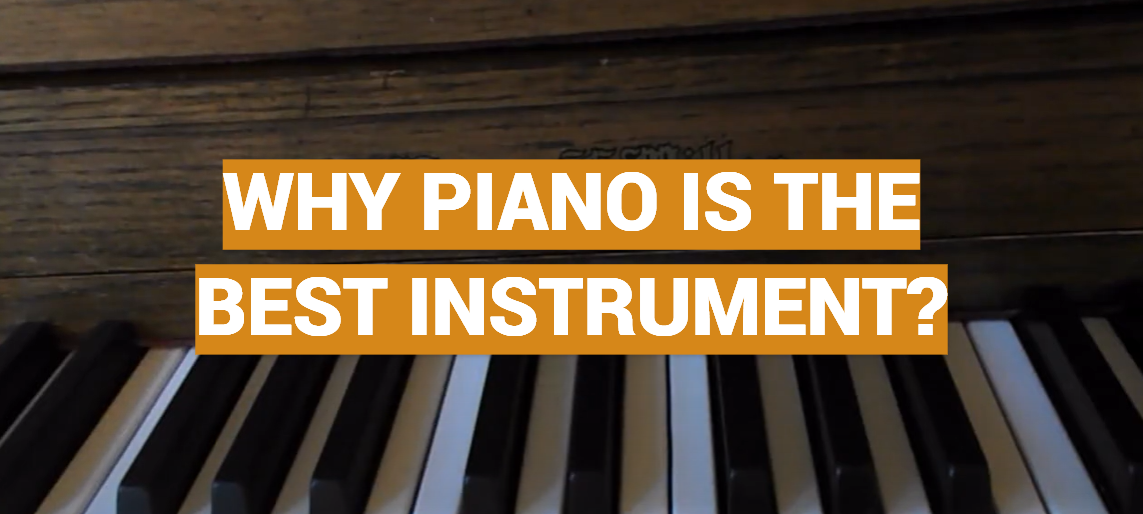
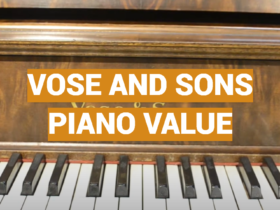


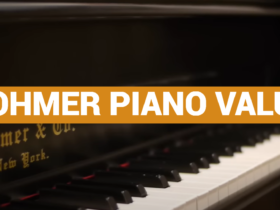
Leave a Reply